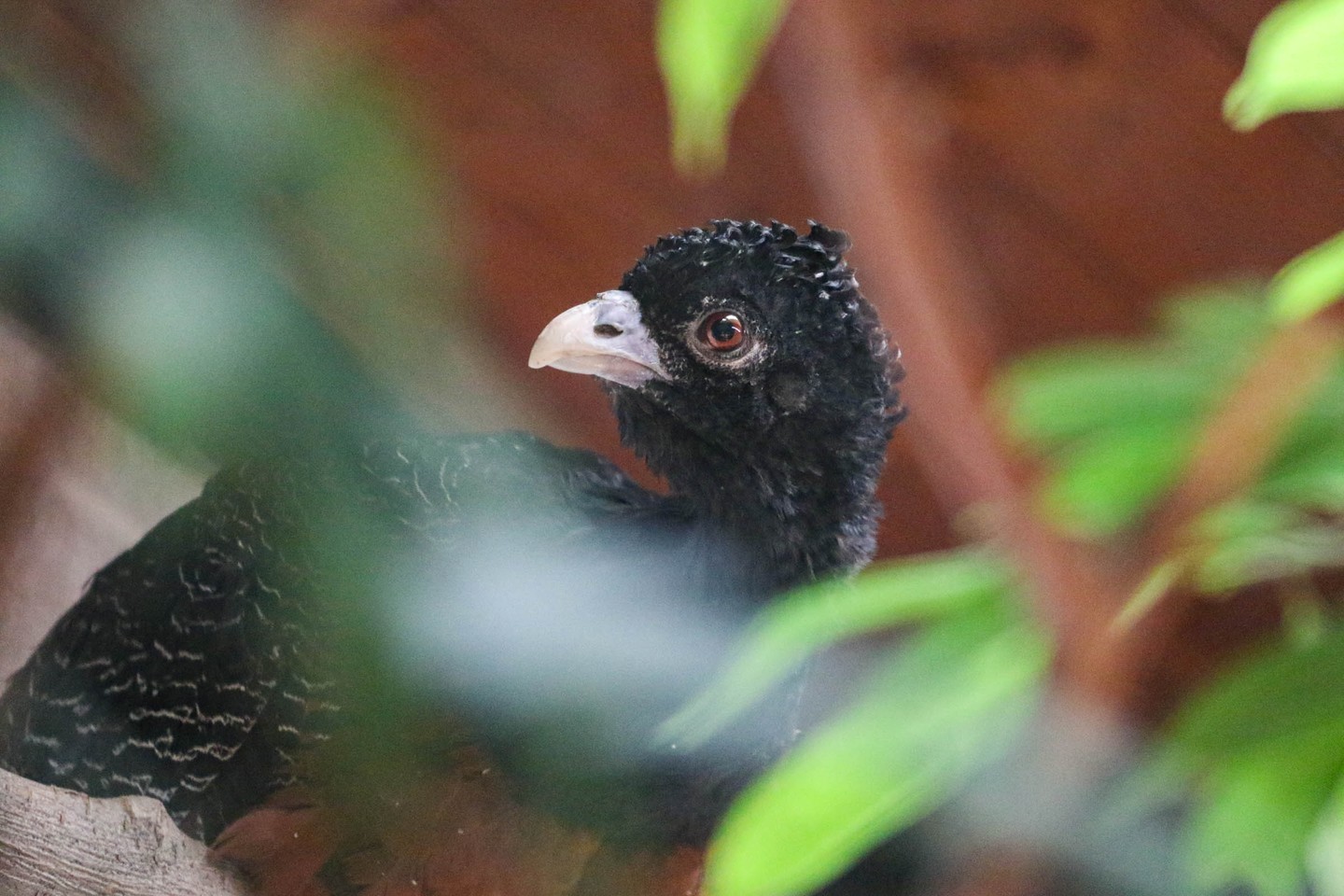– Rare Sighting: The Welcoming of Blue-billed Curassows at Tracy Aviary
– Conservation Challenges: Understanding the Plight of a Critically Endangered Species
– Natural Wonders: Exploring the Exclusive Habitat of the Blue-billed Curassow
– Aviary Adventures: What to Expect During Your Visit to the South American Pavilion
Step into a world of feathered marvels and avian mysteries where Tracy Aviary plays host to a pair of extraordinary guests, the Blue-billed Curassows. With their enigmatic charm, these magnificent birds are a sight to behold. Engaging with these rare birds offers a glimpse into a species clinging to survival, with their existence intertwined with the northern reaches of Colombia’s lush forests. Let’s embark on a journey that unfolds the story of these black-plumed wonders and how their arrival at the Aviary is a cause for both celebration and contemplation.
As you step through the welcoming gates of Tracy Aviary’s South American Pavilion, a sense of anticipation builds. The pavilion, a vibrant hub of avicultural diversity, hosts an array of South American birdlife, each species with its tale. However, the recent introduction of the Blue-billed Curassows, Crax alberti, is stirring an exceptional level of interest due to their striking appearance and status as one of the world’s most endangered bird species.
The Blue-billed Curassow is no ordinary bird; its very presence is an alive whisper of the tales of northern Colombia. Covered in glossy black plumage, males sport a vivid blue bill and a distinctive curly crest atop their heads, while females offer a more muted beauty with their chestnut-hued feathers. These birds thrive in secrecy, preferring the quiet of undisturbed forests—forests that are, unfortunately, disappearing at an alarming rate due to deforestation and habitat loss.
Despite the solemnity of their plight, their arrival at the aviary beacons was like a lighthouse for conservation efforts. It brings a golden opportunity for visitors to engage with these majestic creatures, many for the first time. Observe as they perch with elegance, a display of nature’s perfection yet a poignant reminder of the fragility of life and the ever-looming threat of extinction that overshadows their natural habitat.
Beyond just observing these rarities, visiting the pavilion is an interactive learning experience. It’s where the abstract concept of conservation materializes before your eyes, sparking a connection that could inspire action. Absorb the sight of their extraordinary living habits; watch as they feast on an array of fruit, nuts, seeds, and the occasional small animal—a crucial insight into their dietary needs and preferences.
The Curassows’ behavior is captivating, from their foraging methods to their soft, booming calls—a soothing sound that belies the urgency of their conservation status. Curious minds may wonder how such creatures, perfectly evolved for their environment, have found themselves on the brink. The answer lies in an intricate web of factors, mostly stemming from human influence.
Look beyond their physical beauty and allow the curassows to tell their story—one of loss but also one of hope and persistence. Their journey to Tracy Aviary symbolizes the global efforts to save endangered species, encompassing habitat protection, captive breeding, and education.
Engage with the passionate staff and the stewards of these avian treasures, and unearth the significance of breeding programs like the one at Tracy Aviary. Such programs are essential, providing an insurance policy for the species by maintaining a genetically diverse population outside their native habitat, thus safeguarding their future.
The blue-billed curassow’s narrative weaves into the broader conversation about biodiversity and its importance to ecosystems. Their ecological role as seed dispersers in their native lands is irreplaceable, a vital cog in the wheel of their ecosystem. Our duty, as visitors and as humans sharing this planet, is to reflect on the interconnectedness of life and the impact of our actions on the survival of other species.
Venturing through the Aviary, each flap of their wings or soft murmur among the leaves is a lesson in coexistence. The Aviary is not just a place to marvel at exotic birds; it is a microcosm of the global ecosystem—a controlled environment where education, observation, and conservation meld together harmoniously.
As the visit draws close, it becomes evident that the Blue-billed Curassows are more than just another attraction. They are ambassadors for the wild, messengers for the unseen and unheard species that thrive quietly in the nooks of our planet. They prompt a realization that every creature, no matter how small or obscure, has an intrinsic value and role in the grand tapestry of life.
And so, we depart from Tracy Aviary but with an enriched perspective. This visit isn’t merely a walk through an aviary; it is a step on a bridge between humans and the natural world. A bridge that leads to understanding, respect, and, ultimately, the responsibility to protect those who cannot speak for themselves.
The Blue-billed Curassows at Tracy Aviary is a clarion call to action, a tangible example of the beautiful, brittle world hidden from our day-to-day gaze. They are a reminder that the beauty of nature is not indestructible and requires our care and commitment.
Take your memories and newfound knowledge, and let them guide your choices. Share their story, support conservation efforts, and become a part of the silent symphony that is working to ensure that the haunting call of the Blue-billed Curassow does not fade into silence.
The Aviary is always evolving, and with each visit, there’s the potential to see something new, learn something revolutionary, and feel something profound. Let this experience be the first of many as you continue to explore, appreciate, and advocate for the natural world, a world as delicate as it is delightful.
*****
Source Description
We are pleased to welcome two Blue-billed Curassows to Tracy Aviary! This secretive species is only found in northern Columbia and is listed as critically endangered. You can see them in our South American Pavillion during your next visit!
Image Description: A large black bird viewed through leaves. The bird is perched in a tree.

